“Phrik nam pla” or “nam pla phrik?”
It’s Thailand’s very own chicken-and-egg dilemma, played out over one of the nation’s most beloved table companions: fish sauce with chili. Everyone has a take, and the debate is enough to spark a culinary skirmish across the country — let alone among chefs and self-proclaimed culinary experts. Some argue it all comes down to ritual — do you tip in the chilies first, or the fish sauce? Others throw in their loyalty with the fiery camp, letting the chilies bully the balance until the fish sauce is reduced to a salty murmur.
As a linguist, I’d look at it through the lens of the Thai language: “nam pla” (fish sauce) takes center stage as the salty backbone of countless dishes, while “phrik” (chili) is the fiery modifier. Still, the phrase “phrik nam pla” has stuck in everyday speech, rolling off the tongue with ease. In a way, it mirrors English quirks too — think of “chili sauce” or “chili oil,” where the adjective comes first. Language, like flavor, has its own way of seasoning the conversation.

“You can call it ‘nam pla phrik’ or ‘phrik nam pla’ — I don’t see it as wrong,” said Chef Sujira "Aom" Pongmorn of Khaan, a contemporary Thai restaurant on Soi Somkit in Bangkok listed in the MICHELIN Guide Thailand 2025. “At the end of the day, it’s simply a condiment that enhances the flavors of Thai food. You’ll find it on the table alongside everyday dishes, much like how we say khao kaeng, khao rad kaeng, or gaeng rad khao — all meaning rice with curry or other side dishes to enjoy. Phrik nam pla is always there to dial up the heat, and it goes perfectly with fried eggs, Thai-style omelets, boiled eggs or even steamed eggs.”
“But one thing you can’t go without when eating phrik nam pla is steamed rice. Don’t mistake it for something you can just pour over food and eat on its own — it’ll overwhelm the palate, turn too sharp, and simply ruin the meal.”
So, both terms essentially mean the same thing. But as a linguist, we’ll stick with “nam pla phrik” in this article.
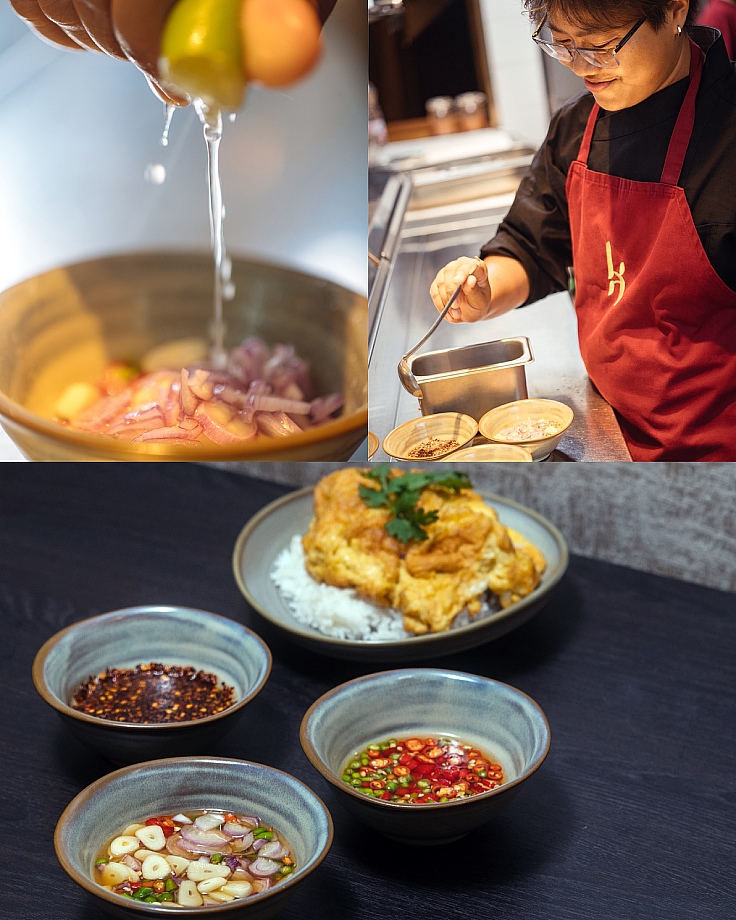
“The beauty of this side condiment is how it enhances the flavor of any dish, adding as much heat as you like. Across Asia, many countries have their own versions of fish sauce — from Cambodia, Laos, Vietnam, Indonesia, Myanmar, Malaysia and the Philippines, to even Japan and South Korea. Everyone has their own take,” said Chef Pongmorn, the first recipient of Thailand’s MICHELIN Young Chef Award in 2021, explaining why this dip has captured so much love.
“In Thailand, this condiment is everywhere — from khao kaeng stalls to stir-fry shops and even Thai restaurants. It’s a simple flavor booster that makes plain jasmine rice delicious, with or without side dishes. Best of all, it’s easy to make with everyday Thai kitchen staples.”
So what makes a good nam pla phrik? Should it lean salty? Can you add lime? And what if there’s more chili than fish sauce, making it practically phrik nam pla…?
For Pongmorn, the ideal version should be well-rounded, spicy and freshly made, so the bright flavors of chili and lime shine through and elevate any dish. “Most importantly, use good-quality fish sauce — a good fish sauce purely made from fermented fish, without added salt, because it gives a more fragrant aroma.”
And the chef doesn’t just carry one recipe, but three. Here they are.
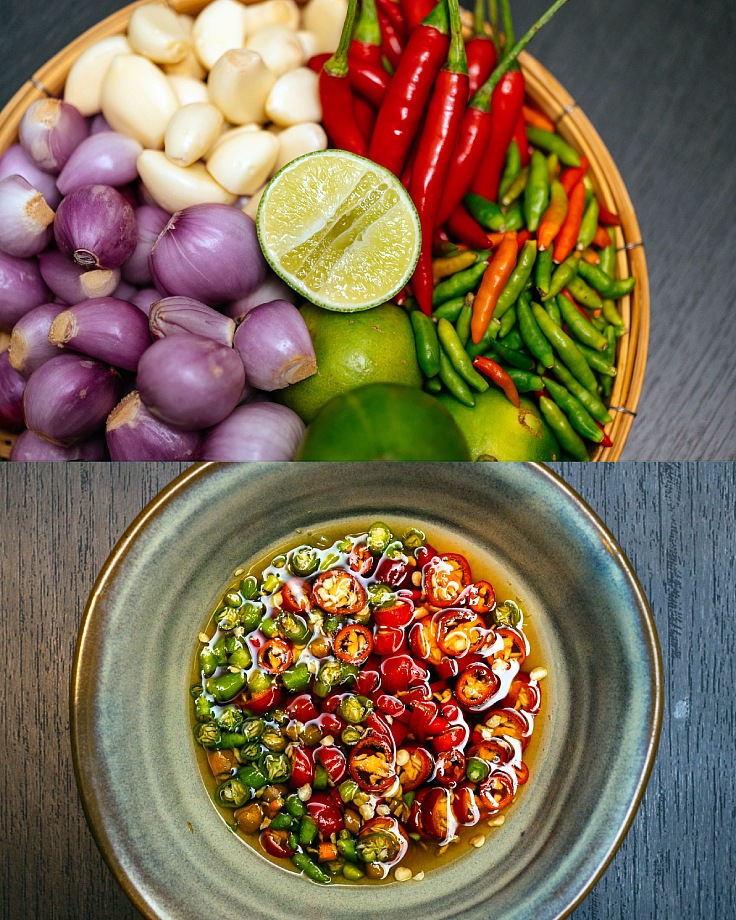
Fish sauce dip #1 — for minimalists and the timeless (serves 2)
The classic forever-favorite: Simple and fuss-free, this version goes with just about anything. Commonly found at khao kaeng stalls or stir-fry shops, some may add a pinch of sugar or MSG, depending on taste. Chef Pongmorn recommends this recipe for its minimal, straightforward ingredients.Ingredients:
- 1 tablespoon, fresh red bird’s eye chili (or green bird’s eye chili), finely sliced — or a mix of both, adjust to preferred heat
- 1 tablespoon, fish sauce
- 1 tablespoon, fresh lime juice
Instructions:
- Combine all ingredients in a small bowl.
- Adjust proportions of chili, fish sauce and lime juice to taste.
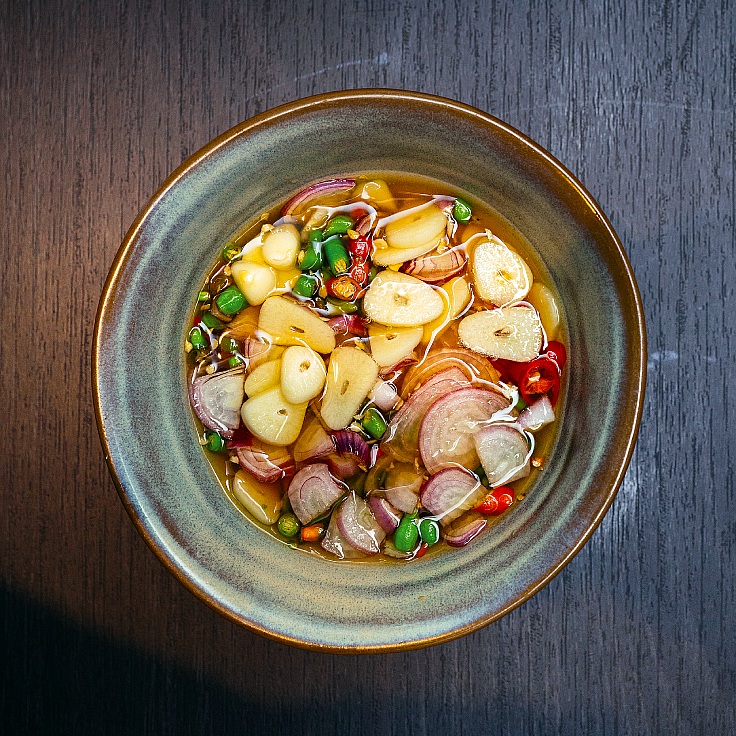
Fish sauce dip #2 — for the aroma lover (serves 2)
The chef’ favorite: For anyone who swoons over the fragrance of garlic and shallots, this one’s your match. It starts with the classic base, then adds an aromatic twist. “I make this one often because I just love garlic, shallots, and a tangier balance,” says the chef. She recommends pairing it with Thai-style omelets, crispy fried fish, golden fried pork, or even a simple curry-over-rice with steaming jasmine rice.
Ingredients:
- 2 tablespoon, fresh red bird’s eye chili (or green bird’s eye chili), finely sliced — or a mix of both, adjust to preferred heat
- 1 tablespoon, fish sauce
- 1 tablespoon, fresh lime juice
- 1 tablespoon, fresh garlic, thinly sliced (garlic powder not recommended)
- 1 tablespoon, fresh shallots, thinly sliced (shallot powder not recommended)
Instructions:
- Combine all ingredients in a small bowl.
- Adjust proportions of chili, fish sauce and lime juice to taste.
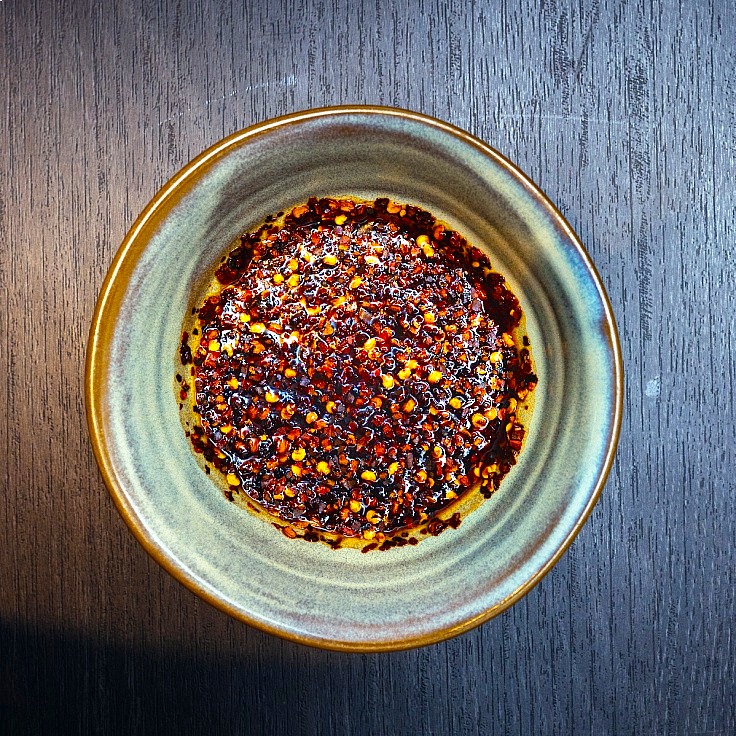
Fish sauce dip #3 — for the no-fuss (serves 2)
No fresh chili? No prob: This version keeps the same base as the classic but swaps in chili flakes. “I use this when I can’t be bothered to slice chilies or when fresh ones aren’t around,” says Pongmorn. It’s a perfect match for fried fish, egg dishes, or even sticky rice with grilled chicken. She’s even tossed it into noodles when too lazy to fuss with extra seasonings — and it still hits the spot.
Ingredients:
- 1 tablespoon, chili flakes (adjust to taste)
- 1 tablespoon, fish sauce
- 1 tablespoon, fresh lime juice
Instructions:
- Combine all ingredients in a small bowl.
- Adjust proportions of chili, fish sauce and lime juice to taste.

Chef Pongmorn’s secrets:
- “You can use lemon as a substitute of lime.”
- “Look for good fish sauce made without added salt or saltwater, which gives a more fragrant aroma. The color isn’t a reliable guide to quality, so it’s best to sniff, taste and check the label, as each brand varies in saltiness.”
- “Fresh bird’s eye chilies give the best aroma, but you can also use fresh red Thai chilies for more color and extra heat.”
- “If you can’t find fresh chilies, chili flakes will do. Even better, grind dried chilies yourself for a fresher kick. Heat level is up to you, but remember to balance it with the right ratio of fish sauce and lime or lemon juice.”
- “Garlic and shallots are easy to find and optional, but never use garlic or shallot powder. It throws off the flavor. I’ve tried it — it doesn’t work. Don’t do it!”
Illustration image: © Anuwat Senivansa Na Ayudhya/ MICHELIN Guide Thailand




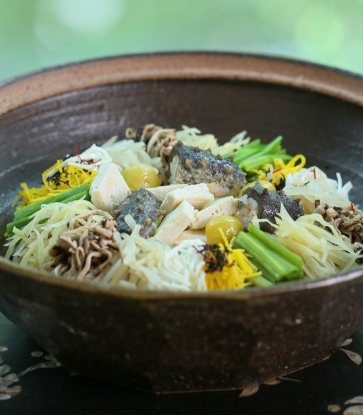
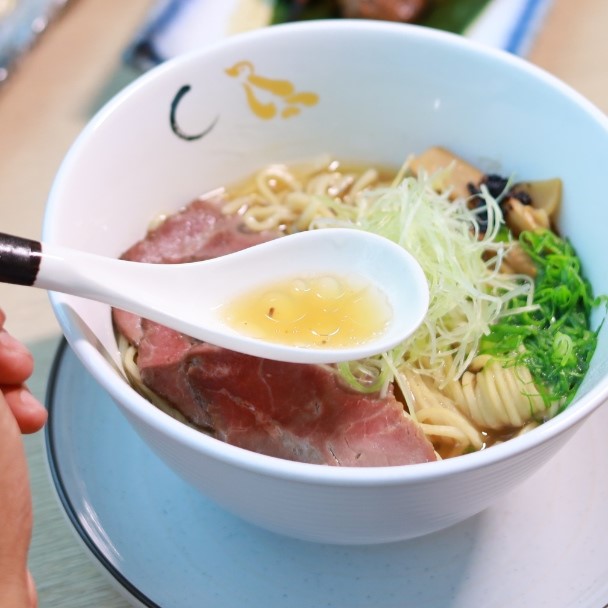


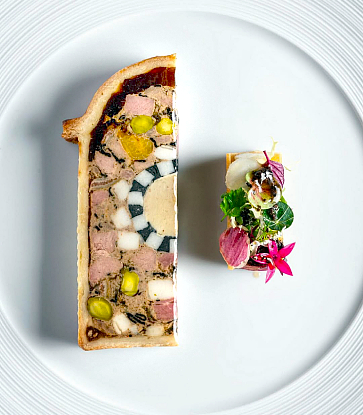
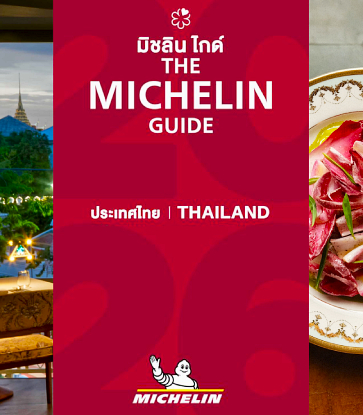

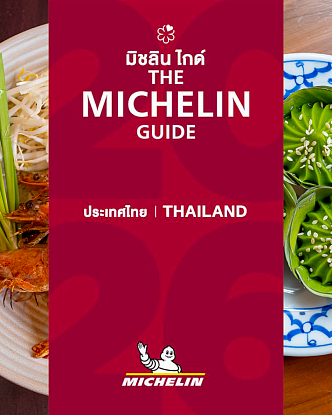

%20-%20Aman%20Nai%20Lert.jpg)
.jpg)


